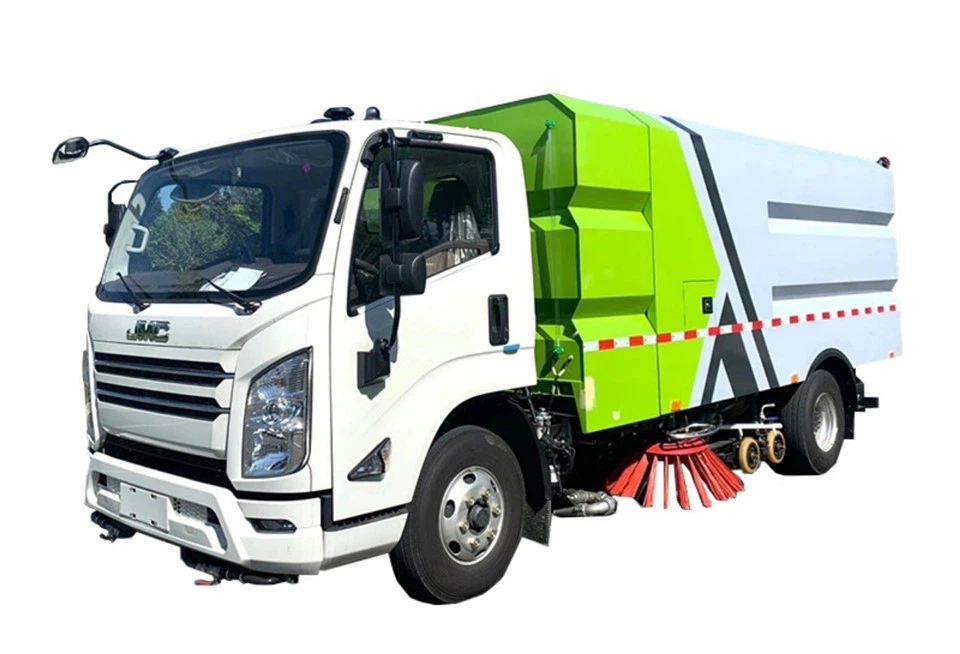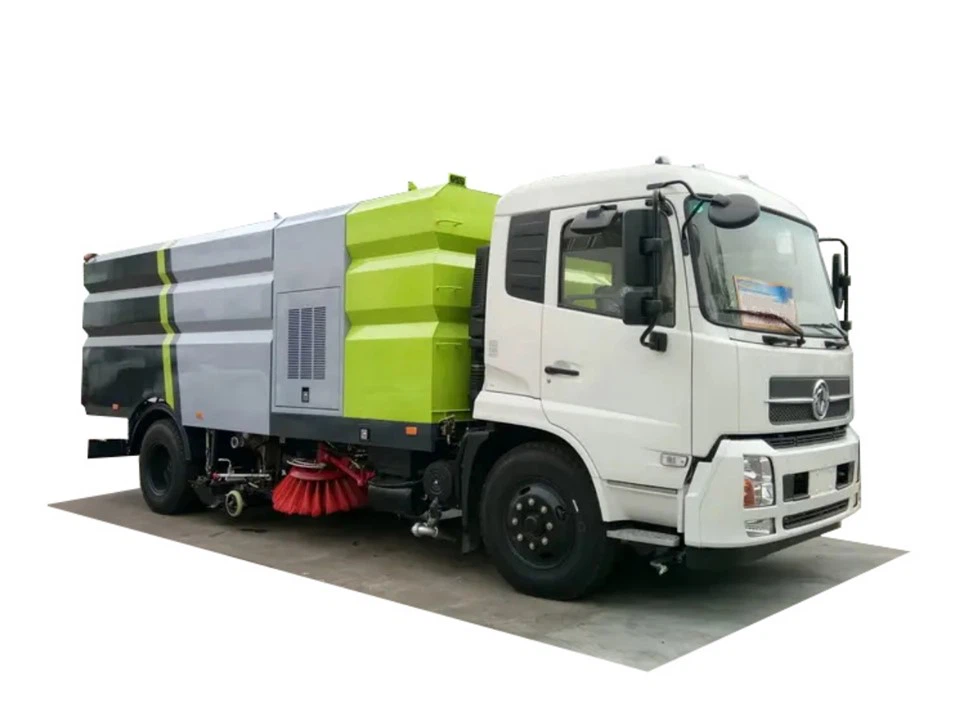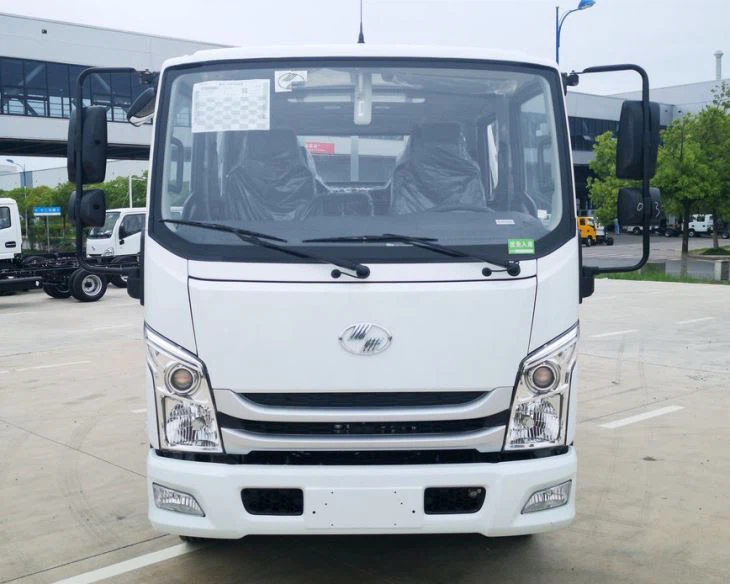Ultimate Guide to Vacuum Tanker Trucks: Efficiency, Usage, and Maintenance

Vacuum tanker trucks are essential in various industries for transporting liquids, sludge, and waste materials. These heavy-duty vehicles are designed not just for hauling but also for suctioning, making them indispensable for waste management, septic services, and industrial applications. In this comprehensive article, we delve into the intricacies of vacuum tanker trucks, exploring their functions, types, features, and essential maintenance tips.
Understanding Vacuum Tanker Trucks
Vacuum tanker trucks utilize a powerful vacuum pump to suck up liquids and semi-solids from different locations. Equipped with a large tank mounted on a truck chassis, these vehicles can handle various materials, including sewage, sludge, and hazardous waste.
How Vacuum Tanker Trucks Work
At the core of a vacuum tanker truck is the vacuum pump, which creates negative pressure inside the tank. This pressure allows the truck to suck up waste materials through a hose. Once the tank is full, it can transport the waste to a processing facility or treatment plant.
Key Components of a Vacuum Tanker Truck
| Component | Description |
|---|---|
| Tank | The primary container for holding waste materials. Tanks vary in capacity, typically ranging from 500 to 5,000 gallons. |
| Vacuum Pump | Creates the suction required to draw waste into the tank. Pumps come in various sizes and types depending on the application. |
| Hoses and Fittings | Used for suctioning and discharging materials. Hoses must be durable and resistant to the waste being handled. |
| Control Valves | Regulate the flow of materials into and out of the tank. |
| Chassis | The truck frame that supports the tank and the pump. Chassis can vary based on the size and load capacity of the vehicle. |
Types of Vacuum Tanker Trucks
Vacuum tanker trucks come in various types, each tailored to specific tasks and materials. Understanding these types can help businesses make informed choices.
1. Septic Tank Trucks

Designed for servicing residential and commercial septic systems, these trucks efficiently pump out sewage and waste. They typically have a large tank and powerful pumps capable of handling viscous materials.
2. Industrial Vacuum Trucks
Used in industrial settings, these trucks handle hazardous waste and sludge. They are equipped with specialized features to contain and transport toxic materials safely.
3. Combination Vac Trucks
These versatile units combine vacuum and pressure functions, making them ideal for both liquid waste and dry materials. They can clear blockages in sewer lines and vacuum up debris simultaneously.
Applications of Vacuum Tanker Trucks
Vacuum tanker trucks serve extensive applications across numerous industries. Here are some critical areas where they are commonly used:
1. Wastewater Management
Municipalities use vacuum tanker trucks to remove and transport sludge and wastewater from treatment facilities. They ensure efficient water management by keeping systems clear of blockages and buildup.
2. Emergency Spill Response
In cases of environmental spills, vacuum tanker trucks swiftly remove hazardous materials to minimize damage. Their suction capability allows for effective cleanup of both liquid and solid waste.
3. Construction Sites
Vacuum trucks are used on construction sites to remove water and debris, maintaining proper drainage and site cleanliness during the building process.
Practical Example: Use in a Highway Spill
During a chemical spill on a highway, municipal authorities can deploy a vacuum tanker truck equipped for hazardous materials. This truck will quickly vacuum the spilled substance, ensuring the area is cleaned and safe for traffic while minimizing environmental impact.
Choosing the Right Vacuum Tanker Truck
Choosing the correct vacuum tanker truck involves considering various factors depending on your needs and applications. Here are some tips:
1. Determine the Capacity
Evaluate the volume of material you anticipate transporting. Trucks come in various sizes; opting for a vehicle with appropriate capacity prevents unnecessary trips and downtime.
2. Consider the Pump Type
Different pumps are suitable for various applications. Choose a pump that aligns with the materials being transported, ensuring efficiency and safety.
3. Evaluate the Build Quality
Look for a truck with a robust build that can withstand the demands of your specific industry. A durable chassis and high-quality tank materials extend the life of the vehicle.
4. Maintenance and Service Options
Consider brands that offer reliable service and maintenance options. Regular upkeep is vital for vacuum tanker trucks to operate efficiently and avoid costly repairs.
Maintenance Tips for Vacuum Tanker Trucks
Regular maintenance is crucial for keeping a vacuum tanker truck in optimal condition. Here are key tips for maintaining these trucks:
1. Regular Inspections
Conduct thorough inspections at regular intervals. Check the vacuum pump, hoses, and tank for signs of wear and leaks.
2. Keep the Tank Clean
After each job, empty and clean the tank to prevent residue buildup that can affect performance. Sanitation may also be a requirement based on the materials transported.
3. Monitor Fluid Levels
Check fluid levels in the vacuum pump and other essential systems regularly. Ensure that they are at the optimal levels to prevent mechanical failures.
4. Service the Pump Regularly
Schedule regular servicing for the vacuum pump to ensure it operates efficiently. Replace filters and check belts as per the manufacturer’s recommendations.
Innovations in Vacuum Tanker Truck Technology
As technology advances, vacuum tanker trucks are transforming with new features designed to enhance productivity and safety. Here are some of the latest innovations:
1. Remote Monitoring Systems
Many newer models come equipped with remote monitoring systems, allowing fleet managers to keep tabs on vehicle performance in real time, from the pump’s efficiency to tank levels.
2. Improved Safety Features
Modern vacuum tanker trucks often have advanced safety features such as automatic shut-off valves and enhanced braking systems, reducing the risk of accidents and spills.
3. Eco-Friendly Engines
With an increasing focus on sustainability, many manufacturers are producing vacuum trucks with eco-friendly engines. These units reduce emissions while maintaining high performance.
Comparing Vacuum Tanker Trucks vs. Standard Tankers
Vacuum tanker trucks serve unique functions that set them apart from standard tankers. Here’s how they compare:
| Feature | Vacuum Tanker Trucks | Standard Tanker Trucks |
|---|---|---|
| Function | Vacuum and transport liquids and semi-solids | Typically transport only liquids |
| Pump Type | Vacuum pump for suction | Centrifugal or positive displacement pumps |
| Applications | Waste management, sewage, environmental cleanup | Fuel, water, food-grade liquids |
| Tank Design | Designed for easy cleaning and material handling | Standard cylindrical design without suction features |
Frequently Asked Questions (FAQ)
1. What is a vacuum tanker truck?
A vacuum tanker truck is a specialized vehicle designed to suction and transport liquids, sludge, or semi-solid waste materials, often used in waste management and industrial applications.
2. How does a vacuum tanker truck work?
A vacuum tanker truck uses a powerful vacuum pump to create negative pressure, allowing it to suction materials through hoses into a large tank mounted on the vehicle.

3. What materials can vacuum tanker trucks transport?
Vacuum tanker trucks can transport various materials, including sewage, sludge, hazardous waste, and even certain types of dry materials in some cases.
4. How do I choose the right vacuum tanker truck for my business?
Consider the capacity, pump type, build quality, and the availability of maintenance and service options to choose a vacuum tanker truck that meets your specific needs.
5. What maintenance is required for vacuum tanker trucks?
Regular inspections, tank cleaning, monitoring fluid levels, and servicing the vacuum pump are essential maintenance tasks to keep vacuum tanker trucks operating efficiently.

6. Are there eco-friendly options available for vacuum tanker trucks?
Yes, many manufacturers offer vacuum tanker trucks with eco-friendly engines designed to reduce emissions while providing the power needed for demanding tasks.
